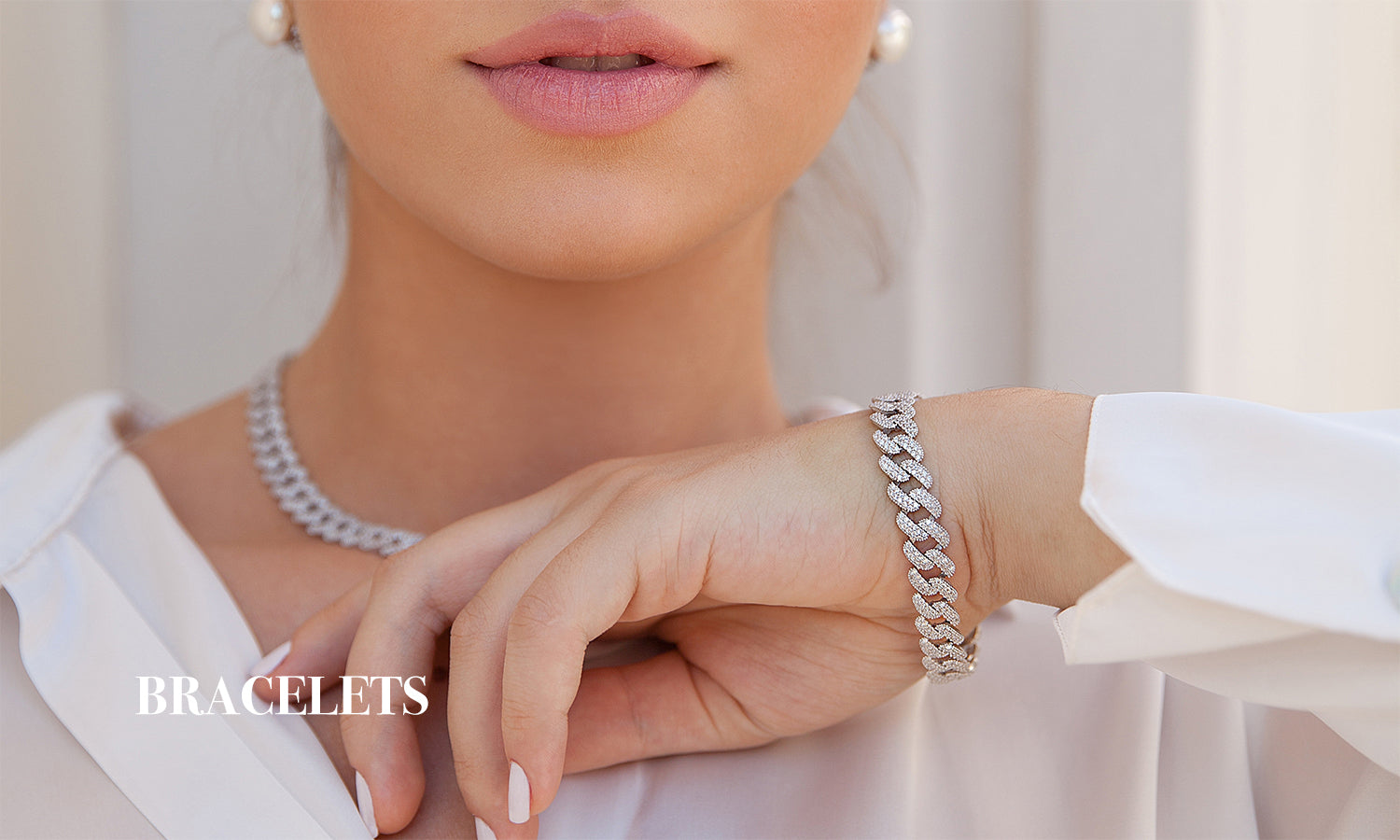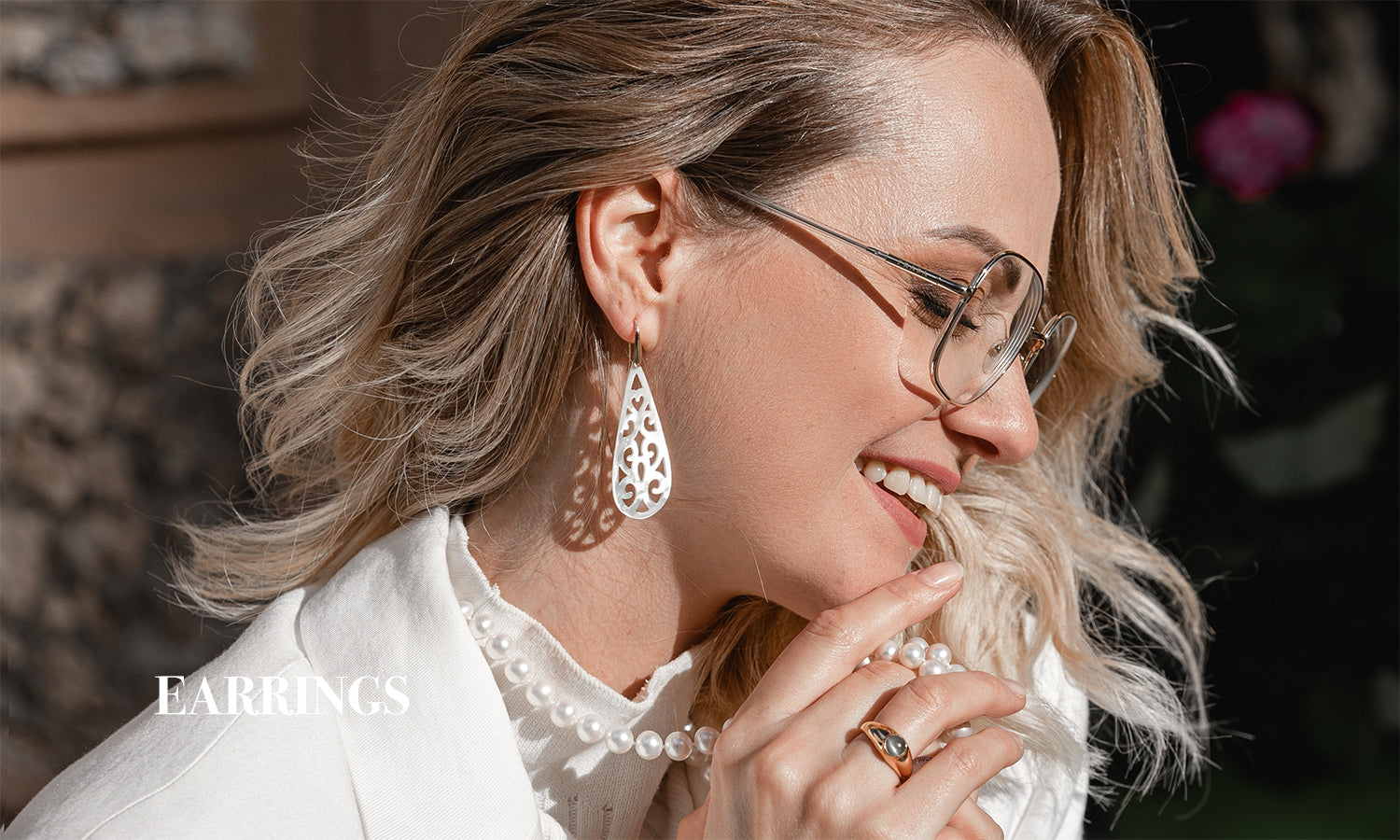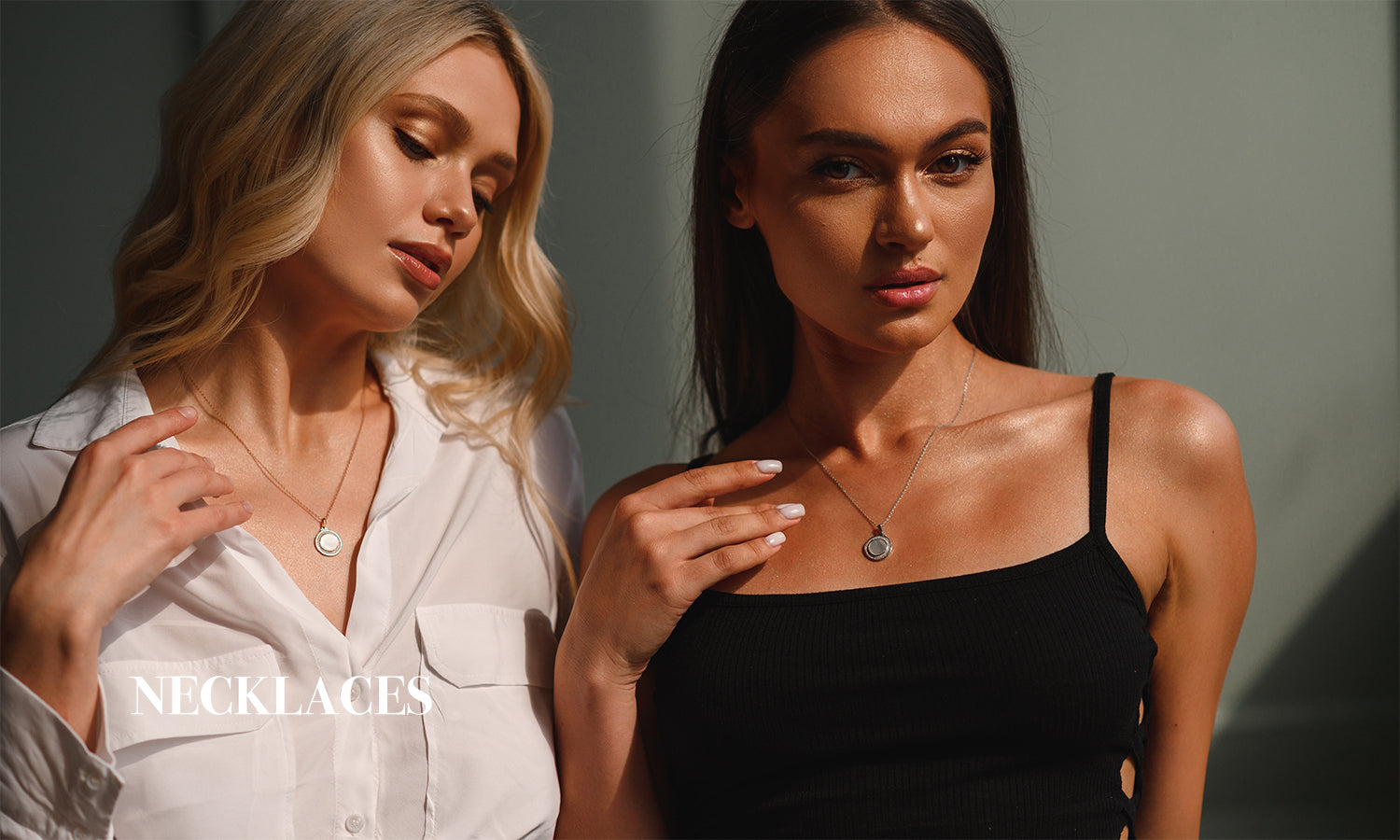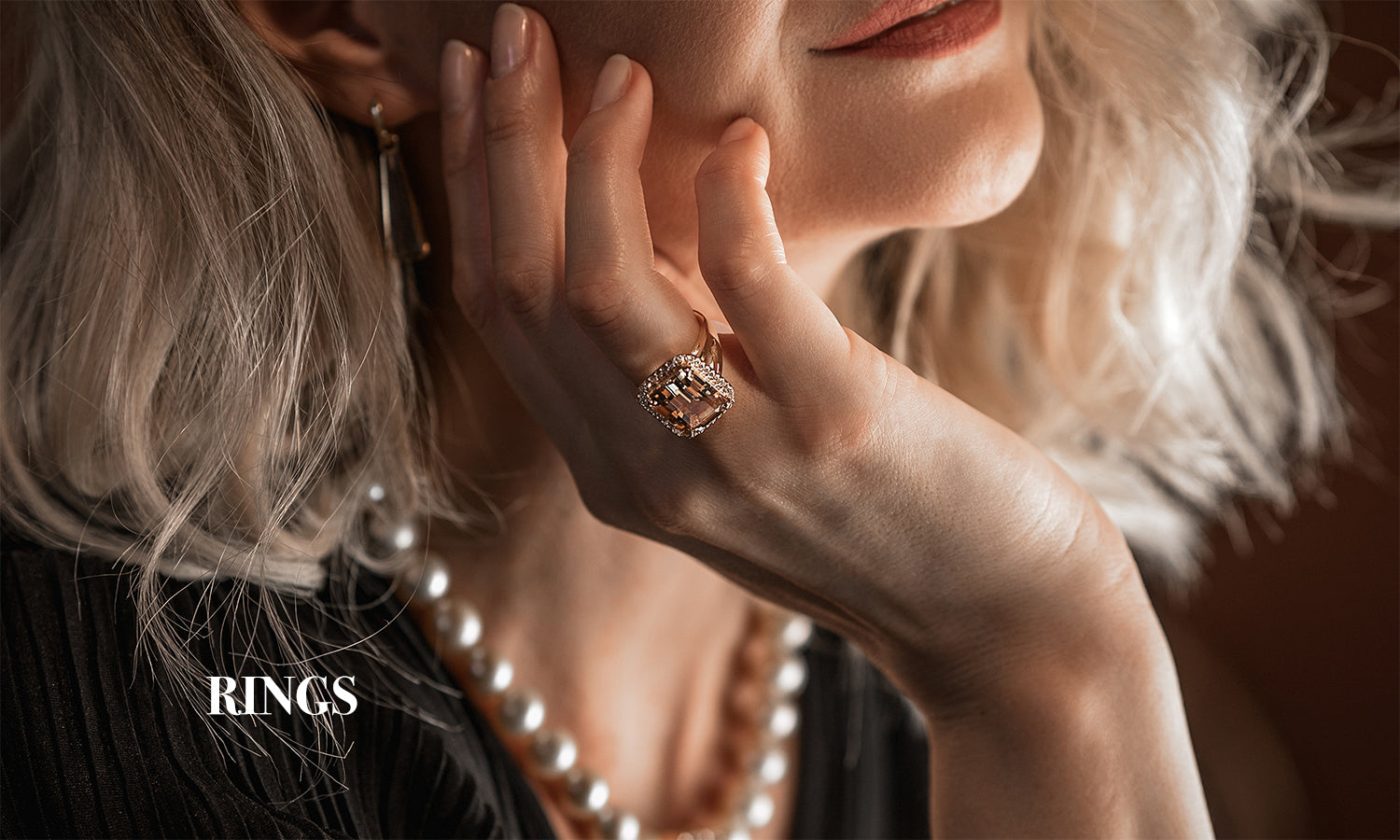Regarding jewelry, necklaces and earrings go together like peanut butter and jelly. You're missing out on a lot if you wear one without the other! It is easy to wear two different pieces that are complementary if not contrasting; make sure they both work with your outfit and personality. One of your favorite ways to blend pieces is by utilizing different colors. You can pair a piece of jewelry with another (or more) to create a new look. You can do this by either matching or contrasting colors. Neither of these options is wrong; it just depends on the piece.
Tips
- Don't go for obvious choices
Emeralds can be pretty, but they're not the most professional choice of gemstone. Someone looking to blend their jewelry professionally should probably avoid choosing emeralds and other stones that are already a common choice for wedding and engagement rings. If someone wants something more traditional in gemstone selection, sapphire is one good option.

- If a stone is not part of the jewelry piece, don't include it
If you're making a ring and you want to include a stone like a peridot, be sure to design the ring so that the space left by the stone is empty. You could even leave it open so that there's an open space where the stone would go. If your client doesn't have a specific gemstone in mind for their jewelry, you can choose which stone to include. As long as you ensure that your choices complement each other and will work well together without sticking out like a sore thumb.
- Don't use too many stones in your design
If you're making a ring with larger stones, it's essential to ensure that the ring is designed, so the eyes aren't too big. For example, if you have stones X and Y, it can be more balanced if you have a diamond. If you have too many different stones in one piece, it's sometimes better to use rings with fewer pieces. If you're working with someone who already has engagement or wedding rings, sometimes there might be a set of neutral or complimentary colored gemstones available that could be used to design your jewelry piece.
- Choose your stones carefully
The color of a stone can make all the difference. Usually, a shade of dark blue will work well in combination with a yellow-gold setting; it creates balance and harmony with the colors already in use. This means that if you're blending your jewelry, you should choose gemstones that are compatible with the ones around them. For example, suppose there's already a sapphire in the ring or bracelet. In that case, there's no reason to add another. Or if someone has an emerald engagement ring, there's no need for another emerald stone unless it is going to be paired with another gemstone or metal tone from the engagement ring.

- Make sure the clasp of your jewelry piece matches
You're creating a piece of jewelry that should reflect the person wearing it. If you're crafting a ring, be sure that your choice of gemstone and metal colors are in harmony with the rest of the ring. If you're adding side stones, be sure they don't stick out too much or won't get in the way when someone tries to put it on their finger. As long as you choose pieces that complement each other, mixing up your materials is okay. For example, if someone wants an emerald but a gold setting because it's more classic, then there's no problem using gold and emerald together in one piece.
- Don't manufacture your jewelry
Some jewelers can create their jewelry, but they should ensure they're not making jewelry that is too similar to the one sitting next. Sometimes a piece is created with a stone and not in combination with another. The jeweler must choose pieces that work well together and complement each other instead of trying to be unique. If you don't have experience making your jewelry, you can always ask someone who does. As long as you ask questions like "What materials do you use?" etc., there shouldn't be any reason not to make something from scratch if you have the skills and knowledge behind it.
- Don't be afraid to ask questions
Even if you're an experienced jeweler and used to making your jewelry, it's crucial to ensure that you're asking the right questions. It's essential to find out what kind of stones the person is looking for and whether they have a budget. If they don't have a strict budget in mind, then there are some things that you can do to help them create their perfect jewelry piece. For example, you could offer them a discount on their chosen gemstones or metals if they order more than one piece. If someone has a tight budget in mind, then you need to know whether particular materials will be affordable. You might have to use alternative materials or be creative to create something they can afford.
- Make sure it's easy to maintain
The type of jewelry you choose will depend on your client. If you're making an engagement ring that the wearer will use daily, then it's essential to make sure that it can be cleaned quickly and that the gemstones won't fall out anytime soon. If someone has a piece in their wardrobe that is so unique that no one else could duplicate it, then you should make sure that you won't have any problems figuring out how to buff or polish the piece regularly so it doesn't turn dull and lose its shine over time. If it's something that will be worn often, then you should ensure that it's not too heavy or clunky. Although people can get used to wearing jewelry like this for years, you should always consider each case separately and try to find alternatives that will work. If you're trying to make a piece of jewelry that someone will wear once or twice a year, then it's not as crucial for the piece of jewelry to be cleaned easily.

- Make sure that the price is worth it
It is crucial for the jeweler working with their client on the design of their jewelry piece to think about the value of what they're making. If someone has a tight budget, you should find out what can be made within that budget without losing quality. It's possible to offer the client alternative materials or styles to get the look they want without spending much money. If the piece is going to be worn on special occasions or for significant events, then it's crucial for some extra value in it in the form of different gemstones, etc.
- Be creative
If you're making a piece of jewelry and want it to stand out from all others, sometimes you have to think outside the box and come up with something unique and different. If someone is looking for a ring with only a few stones, you shouldn't be afraid to use alternative materials to create something different and unique. Sometimes, it's not essential if the jewelry piece is pretty or even if it's easy to maintain. It all depends on the individual and what they're looking for.
- Let them know how proud you are of their creation
If someone has commissioned a piece of jewelry from you, you must tell them how proud you are of the piece they made. After all, they're the ones who spent their time creating something which means so much to them. If you've worked with someone for a long time and have made many pieces for them, it's essential to express how much their trust in you means. After all, you're the person who would be helping them create something which they will love. It's a good idea to help your clients connect the piece they've just commissioned with the rest of your other pieces. It can help them see your work entirely new and make them like your piece even more if they associate it with something else you made.
In conclusion, there's no better way to show how happy you are with your clients' pieces than by giving them a shoutout. If it's something you made for them, then let them know how much satisfaction they've given you. If it's something that someone else made for them, then tell them how happy you are with their choice of materials and design. Sometimes people like to have "official" confirmation that what they've just ordered from a jeweler is perfect. By doing this, customers also feel more trust in the jeweler and often increase their level of loyalty towards your company.





